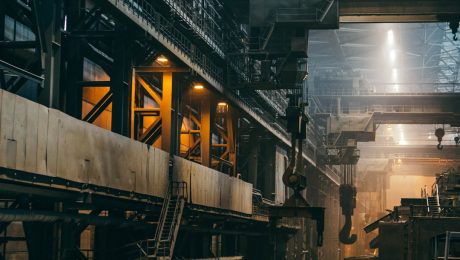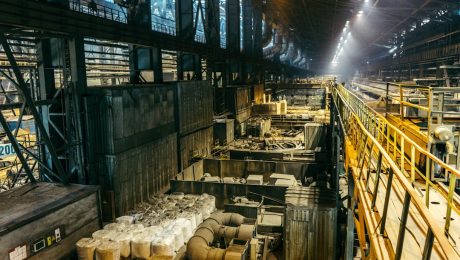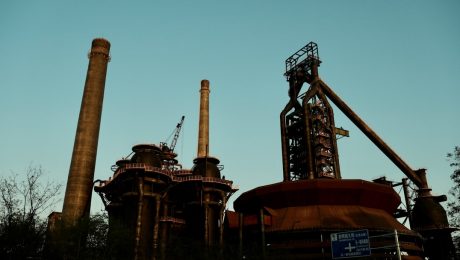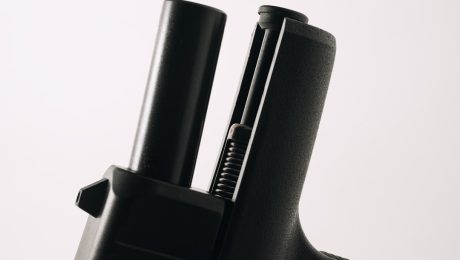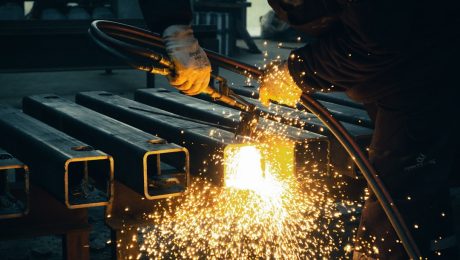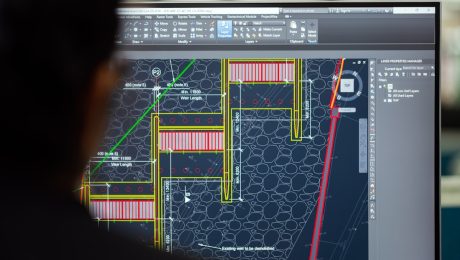The steel industry, a cornerstone of global infrastructure, is undergoing a dramatic transformation. Digitalization is no longer a futuristic concept but a critical driver of efficiency, sustainability, and competitiveness. This blog post explores the key trends shaping the future of digital steel platforms, examining how technology is revolutionizing every stage of the steel lifecycle, from raw material sourcing to final product delivery.
1. AI-Powered Optimization and Predictive Maintenance
Artificial intelligence (AI) is rapidly becoming a game-changer in steel production. AI algorithms can analyze vast datasets from various sources – sensor data from manufacturing equipment, market trends, and even weather patterns – to optimize processes in real-time. This includes predicting equipment failures through predictive maintenance, minimizing downtime, and maximizing resource utilization. For example, AI can predict the optimal temperature and pressure settings for a blast furnace, leading to significant energy savings and improved product quality. Furthermore, AI-powered quality control systems can identify defects early in the production process, reducing waste and improving overall yield.
Beyond production, AI is transforming supply chain management. AI-driven forecasting models can predict demand fluctuations more accurately, enabling steel manufacturers to optimize inventory levels and avoid stockouts or overstocking. This leads to reduced warehousing costs and improved responsiveness to market changes.
2. The Rise of the Industrial Internet of Things (IIoT)
The Industrial Internet of Things (IIoT) is a crucial component of digital steel platforms. By connecting various sensors and devices across the entire steel production process, manufacturers gain real-time visibility into their operations. This data-rich environment allows for continuous monitoring of equipment performance, energy consumption, and material flow. The IIoT enables proactive interventions, preventing potential problems before they escalate into costly disruptions. For example, sensors can detect anomalies in a rolling mill’s operation, allowing for immediate adjustments to prevent defects or shutdowns.
Furthermore, the data collected through IIoT devices can be used to train AI models, improving their accuracy and effectiveness over time. The IIoT’s role in creating a connected and intelligent steel plant is undeniable, leading to increased efficiency and reduced operational costs.
3. Blockchain Technology for Enhanced Transparency and Traceability
Blockchain technology, known for its secure and transparent nature, is increasingly being explored in the steel industry to enhance traceability and combat counterfeiting. By recording every stage of the steel lifecycle on a distributed ledger, from raw material sourcing to the finished product, manufacturers can provide customers with complete transparency about the origin and journey of their steel. This is especially critical for industries with stringent quality and sustainability requirements, such as automotive and construction.
Blockchain can also streamline supply chain processes, reducing paperwork and improving efficiency. Smart contracts can automate payments and other transactions, reducing delays and enhancing trust between different stakeholders in the supply chain. This increased transparency and traceability builds confidence among customers and strengthens the reputation of steel producers.
4. Embracing Sustainability and Circular Economy Principles
The steel industry is under increasing pressure to reduce its environmental footprint. Digital steel platforms play a crucial role in achieving sustainability goals. By optimizing energy consumption, reducing waste, and improving resource efficiency, digital technologies can significantly contribute to a greener steel industry. AI-powered tools can help optimize energy usage in blast furnaces and other energy-intensive processes, reducing carbon emissions.
Furthermore, digital platforms can facilitate the transition to a circular economy by enabling better waste management and recycling practices. By tracking the lifecycle of steel products, manufacturers can identify opportunities to reuse and recycle materials, reducing reliance on virgin raw materials and minimizing waste sent to landfills. This commitment to sustainability is not just an ethical imperative but also a competitive advantage in an increasingly environmentally conscious market.
5. Digital Twins and Simulation for Improved Design and Production
Digital twins are virtual representations of physical assets or processes. In the steel industry, digital twins can be used to simulate different production scenarios, optimize designs, and identify potential bottlenecks before they occur in the real world. This allows manufacturers to test different parameters and strategies without incurring the costs and risks associated with physical experimentation.
By using digital twins, steelmakers can improve the efficiency of their production processes, reduce downtime, and improve the quality of their products. The ability to simulate various scenarios allows for better decision-making and a more proactive approach to problem-solving. This technology is particularly valuable in complex processes like steelmaking, where even small changes can have significant impacts on the final product.
The future of the steel industry is inextricably linked to the adoption and advancement of digital steel platforms. The trends discussed above represent just a glimpse into the transformative power of technology in this critical sector. As these technologies continue to evolve and mature, we can expect even more significant advancements in efficiency, sustainability, and competitiveness within the steel industry.
SEO Tags:
- Digital Steel Platforms
- AI in Steel Industry
- Steel Industry 4.0
- Sustainable Steel Production
- Blockchain in Steel Supply Chain
The Cold Drawing Process: Shaping Precision
Cold drawn square bars are produced through a precise metalworking process known as cold drawing. Unlike hot-rolled bars, which are shaped at high temperatures, cold drawing involves pulling a pre-heated bar through a series of dies at room temperature. This process significantly enhances the bar’s properties. The dies, precisely engineered to the desired square cross-section, gradually reduce the bar’s diameter and simultaneously improve its surface finish, straightness, and dimensional accuracy. The cold working process strengthens the material through work hardening, increasing its tensile strength, yield strength, and hardness. This process also results in a finer grain structure, contributing to improved fatigue resistance and machinability.
The initial stage often involves pickling, a process that removes surface oxides and scale from the hot-rolled bar, ensuring a clean surface for drawing. Lubrication is critical throughout the drawing process, minimizing friction and preventing damage to both the bar and the die. The precise control over temperature, pressure, and lubrication is essential for achieving the desired final dimensions and properties.
Exceptional Properties: Strength, Precision, and More
The cold drawing process bestows several advantageous properties on square bars. Firstly, the enhanced strength is a key benefit. Cold-drawn bars exhibit significantly higher tensile and yield strengths compared to their hot-rolled counterparts. This increased strength makes them ideal for applications requiring high load-bearing capacity. Secondly, the process results in superior dimensional accuracy and surface finish. The tight tolerances achievable make cold-drawn square bars perfect for precision engineering applications where exact dimensions are crucial. The smooth surface finish reduces friction and wear, enhancing the performance and lifespan of components.
Furthermore, cold drawing improves the bar’s machinability. The finer grain structure and improved surface finish make them easier to machine, reducing tool wear and increasing production efficiency. This is particularly advantageous in high-volume manufacturing environments. Cold-drawn bars also exhibit enhanced fatigue resistance, meaning they can withstand repeated cycles of stress without failure, extending the lifespan of components in dynamic applications.
Diverse Applications: Where Precision Meets Strength
The unique combination of strength, precision, and machinability makes cold-drawn square bars incredibly versatile. They find applications in a wide range of industries and applications. In the automotive industry, they are used for manufacturing chassis components, suspension parts, and steering mechanisms. Their high strength-to-weight ratio is particularly valuable in reducing vehicle weight without compromising structural integrity.
The construction industry also benefits significantly from the use of cold-drawn square bars. They are commonly used in structural applications where high strength and dimensional accuracy are essential. In the manufacturing sector, they are used to create various components, including machine parts, tools, and fixtures. Their excellent machinability and dimensional accuracy make them ideal for precision engineering applications. Other applications include hydraulic cylinders, pneumatic components, and various types of tooling.
Material Selection: Choosing the Right Steel Grade
Cold-drawn square bars are available in a variety of steel grades, each offering a unique combination of properties. The choice of material depends on the specific application requirements. Common steel grades include low carbon steel, medium carbon steel, and high carbon steel. Low carbon steel offers good ductility and weldability, while medium and high carbon steels provide enhanced strength and hardness. Stainless steel grades are also available, providing excellent corrosion resistance.
Factors to consider when selecting a steel grade include the required tensile strength, yield strength, hardness, ductility, and corrosion resistance. The operating environment and the type of stresses the bar will experience are also crucial factors. Consulting with a materials specialist can help determine the optimal steel grade for a specific application.
Advantages Over Other Methods: Why Choose Cold Drawing?
Compared to other methods of producing square bars, such as hot rolling, cold drawing offers several key advantages. The superior dimensional accuracy and surface finish are significant benefits in precision engineering applications. The enhanced strength and hardness contribute to improved component lifespan and performance. The improved machinability reduces manufacturing costs and increases production efficiency.
Furthermore, cold drawing can produce bars with tighter tolerances and a smoother surface finish than hot rolling. This reduces the need for secondary machining operations, saving time and resources. The increased strength and fatigue resistance of cold-drawn bars contribute to a longer service life for the final product. Ultimately, the advantages of cold drawing often translate to improved product quality, reduced costs, and increased efficiency.
Cold-drawn square bars represent a crucial component in numerous industries, providing a combination of strength, precision, and efficiency that is unmatched by other methods. Understanding their properties and applications is vital for engineers and manufacturers seeking high-performance materials for their projects.
body { font-family: sans-serif; line-height: 1.6; }
h1, h2, h3 { color: #333; }
The steel industry, a cornerstone of global infrastructure and manufacturing, presents buyers with a crucial decision: procure steel through spot purchases or secure long-term contracts. This decision significantly impacts pricing, risk management, and overall supply chain efficiency. This comprehensive guide dissects the advantages and disadvantages of each approach, helping you determine the optimal strategy for your business needs.
Understanding Spot Steel Contracts: Riding the Price Waves
Spot contracts involve purchasing steel on the open market at the prevailing market price. This approach offers flexibility and responsiveness to short-term needs. Buyers can quickly acquire steel when needed, adapting to fluctuating demand and project timelines. However, this flexibility comes at a cost. Spot prices are volatile, subject to market fluctuations influenced by raw material costs, global demand, and geopolitical events. This volatility introduces significant price risk. A sudden surge in prices can severely impact project budgets and profitability. Furthermore, the availability of steel through spot purchases isn’t guaranteed, particularly during periods of high demand or supply chain disruptions.
The Stability of Long-Term Steel Contracts: A Haven in Volatile Markets
Long-term steel contracts, typically spanning several months or even years, provide price certainty and supply security. These contracts lock in a predetermined price per ton, shielding buyers from the unpredictable swings of the spot market. This price stability allows for better budget planning and forecasting, enhancing project predictability. Moreover, long-term contracts often guarantee a consistent supply of steel, mitigating the risk of shortages. This reliability is particularly crucial for businesses with continuous production needs or large-scale projects.
Price Volatility: The Defining Factor in Contract Selection
The most significant difference between spot and long-term contracts lies in price volatility. Spot contracts expose businesses to the full force of market fluctuations, potentially leading to substantial cost overruns. Long-term contracts, on the other hand, mitigate this risk by fixing prices upfront. However, this stability comes with the potential downside of missing out on price drops if the market declines after the contract is signed. Therefore, careful market analysis and forecasting are essential to make an informed decision. Consider your risk tolerance and the potential impact of price fluctuations on your business’s profitability.
Supply Chain Considerations: Security vs. Flexibility
Supply chain security is another crucial factor. Spot contracts offer flexibility but lack the guaranteed supply of long-term contracts. In times of market disruptions or unforeseen events, securing steel through spot purchases can be challenging and costly. Long-term contracts, by guaranteeing supply, ensure uninterrupted production and project execution. However, this security can come at the cost of flexibility. Changing project needs or unexpected demand shifts might be difficult to accommodate under a rigid long-term contract. The optimal choice depends on the predictability and stability of your production and project requirements.
Risk Management: Hedging Against Market Uncertainty
Effective risk management is paramount in steel procurement. Spot contracts require robust risk mitigation strategies, such as hedging or price forecasting tools, to minimize exposure to price volatility. Long-term contracts inherently reduce price risk, but other risks remain, such as supplier default or unforeseen changes in project specifications. A comprehensive risk assessment, considering both market and contractual risks, is crucial for both spot and long-term approaches. Diversifying your supplier base, regardless of contract type, can also significantly reduce overall risk.
Ultimately, the choice between spot and long-term steel contracts depends on a careful evaluation of your specific business needs, risk tolerance, and market outlook. A thorough understanding of the advantages and disadvantages of each approach, coupled with meticulous market analysis and risk assessment, will guide you towards the most effective procurement strategy for your organization.
SEO-Friendly Tags:
- Spot steel contracts
- Long-term steel contracts
- Steel price volatility
- Steel supply chain management
- Steel procurement strategy
Wind turbines, the silent giants of renewable energy, rely on complex and robust support systems to harness the power of the wind. These systems, often overlooked, are critical to the efficient and safe operation of these massive structures. This in-depth exploration will delve into the intricacies of wind turbine blade support, examining the various components and their crucial roles in maximizing energy production and ensuring longevity.
1. The Foundation of Power: Understanding the Main Bearing System
The main bearing system sits at the heart of a wind turbine’s support structure, acting as the pivotal point around which the nacelle (housing the gearbox, generator, and other components) rotates. This system typically comprises a combination of bearings, including:
- Main Shaft Bearings: These large, high-precision bearings support the weight of the nacelle and rotor, enabling smooth yaw (horizontal) and pitch (vertical) movements.
- Yaw Bearings: These allow the entire nacelle to turn into the wind, maximizing energy capture. They are designed to withstand significant loads and resist wear from constant rotation.
- Pitch Bearings: These bearings are crucial for individual blade pitch control, allowing the blades to adjust their angle to optimize energy capture in varying wind speeds. Their precise operation is vital for efficient energy generation and preventing damage from excessive loads.
The design and material selection for main bearing systems are critical. Factors like load capacity, fatigue resistance, and lubrication are meticulously considered to ensure reliability and a long operational lifespan. Regular inspection and maintenance of these bearings are essential for preventing catastrophic failures.
2. Pitch Control Systems: Optimizing Energy Capture and Protection
Pitch control is a sophisticated system that adjusts the angle of each turbine blade individually. This adjustment allows the turbine to:
- Maximize Energy Capture: At optimal wind speeds, the blades are positioned to extract maximum energy.
- Protect Against Over-speeding: In high winds, the blades are pitched to a feathered position, reducing energy capture and preventing damage to the turbine.
- Smooth Operation: Pitch control ensures smooth and efficient power generation across varying wind conditions.
The pitch system relies on hydraulic or electric actuators, controlled by a sophisticated control system that monitors wind speed and adjusts blade angles accordingly. The precision and responsiveness of this system are critical to the turbine’s overall performance and safety.
3. Yaw Systems: Tracking the Wind for Maximum Efficiency
The yaw system allows the entire nacelle to rotate (yaw) to align with the prevailing wind direction. This ensures that the turbine is always facing directly into the wind, maximizing energy capture. The system generally comprises:
- Yaw Drive: This mechanism rotates the nacelle, often powered by a hydraulic or electric motor.
- Yaw Gearbox: This component reduces the speed of the yaw drive motor while increasing the torque, allowing for smooth and controlled rotation.
- Yaw Sensors: These sensors constantly monitor wind direction and provide feedback to the control system.
Precise yaw control is crucial for efficient energy production. Even small deviations from optimal alignment can significantly reduce energy output. Regular maintenance and calibration of the yaw system are crucial for maximizing its performance and preventing malfunctions.
4. Blade Support Structures: Ensuring Structural Integrity
Beyond the main bearings and control systems, the structural integrity of the blades themselves is paramount. Blade support structures play a key role in this. These structures, often made from composite materials, must withstand immense forces generated by wind loads, centrifugal forces, and thermal stresses.
The design and construction of blade support structures are complex engineering feats. Finite element analysis (FEA) is often used to simulate the stresses and strains on the blades under various conditions, ensuring that they can withstand the extreme forces they experience. Regular inspections for fatigue cracks and other damage are essential to maintaining structural integrity.
5. Maintenance and Monitoring: Ensuring Long-Term Reliability
Regular maintenance and monitoring of wind turbine blade support systems are critical for ensuring long-term reliability and preventing costly downtime. This includes:
- Regular Inspections: Visual inspections, vibration analysis, and oil analysis are used to detect potential problems early on.
- Predictive Maintenance: Advanced monitoring systems use sensors to track the performance of various components, allowing for proactive maintenance and preventing unexpected failures.
- Component Replacement: As components wear out, they need to be replaced to maintain the safety and efficiency of the system.
The development of advanced monitoring technologies and predictive maintenance strategies is constantly improving the reliability and efficiency of wind turbine support systems, reducing downtime and maximizing energy production.
In conclusion, the support systems within a wind turbine are far from simple. Their complexity and importance are crucial for reliable and efficient energy generation. Understanding their intricacies is key to appreciating the engineering marvels that are modern wind turbines and their contribution to a sustainable energy future.
SEO Tags:
wind turbine blade support, wind turbine maintenance, wind turbine pitch system, wind turbine yaw system, wind turbine bearings
body {
font-family: sans-serif;
line-height: 1.6;
}
h1, h2, h3 {
color: #333;
}
img {
max-width: 100%;
height: auto;
display: block;
margin: 20px auto;
}
In today’s world, noise pollution is a significant concern, impacting productivity, health, and overall well-being. Effective acoustic control is no longer a luxury but a necessity, particularly in commercial and industrial spaces. Acoustic steel profile systems offer a sophisticated and highly effective solution for managing sound, providing architects and engineers with a versatile tool to create quieter and more comfortable environments. This comprehensive guide delves into the intricacies of these systems, exploring their design, benefits, applications, installation, and future trends.
Understanding the Design of Acoustic Steel Profile Systems
Acoustic steel profile systems are engineered structures composed of lightweight steel profiles, strategically designed to absorb and diffuse sound waves. These systems typically incorporate sound-absorbing materials within their framework, such as mineral wool, fiberglass, or recycled materials. The design focuses on maximizing surface area and creating cavities that trap sound energy, preventing its transmission. The steel profiles themselves provide structural support and stability, ensuring the system’s longevity and durability. Different profile designs offer varying levels of acoustic performance, catering to specific noise reduction requirements. Factors like profile spacing, material thickness, and the type of sound-absorbing material used all contribute to the system’s overall acoustic efficiency. Careful consideration of these design elements is crucial for achieving optimal sound control.
The Key Benefits of Choosing Acoustic Steel Profile Systems
Acoustic steel profile systems offer a multitude of advantages over traditional acoustic solutions. Their lightweight nature simplifies installation, reducing labor costs and project timelines. The robust steel construction ensures exceptional durability and longevity, withstanding the test of time and resisting damage. Furthermore, these systems are highly versatile, adaptable to various architectural designs and seamlessly integrating into existing structures. Their aesthetic appeal is another significant benefit, allowing for clean, modern designs that complement contemporary architectural styles. The use of sustainable materials in some systems further enhances their environmental friendliness. Finally, their effectiveness in reducing noise pollution contributes to a healthier and more productive environment.
Diverse Applications of Acoustic Steel Profile Systems
The versatility of acoustic steel profile systems makes them suitable for a wide range of applications. They are frequently used in offices to create quiet zones and enhance concentration. Industrial settings benefit from these systems by reducing noise pollution from machinery, improving worker safety and productivity. Educational institutions use them to create acoustically comfortable learning environments, minimizing distractions and promoting better learning outcomes. Furthermore, these systems are ideal for recording studios, cinemas, and concert halls, where precise acoustic control is paramount. Hospitals and healthcare facilities also benefit from the noise reduction capabilities, contributing to patient comfort and recovery. The adaptability of these systems ensures their relevance across diverse sectors and project requirements.
Installation and Maintenance of Acoustic Steel Profile Systems
The installation process of acoustic steel profile systems is relatively straightforward, although professional expertise is often recommended for optimal results. The systems are typically pre-fabricated off-site, ensuring precision and minimizing on-site work. Installation involves attaching the steel profiles to existing structures using appropriate fasteners. The sound-absorbing material is then carefully placed within the framework, ensuring proper sealing to maximize acoustic performance. Regular maintenance is minimal, primarily involving visual inspections to identify any damage or deterioration. The durable steel construction ensures longevity, minimizing the need for frequent repairs or replacements. Proper installation and occasional maintenance contribute to the long-term effectiveness and cost-effectiveness of these systems.
Future Trends in Acoustic Steel Profile Systems
The field of acoustic steel profile systems is constantly evolving, driven by advancements in materials science and engineering. The incorporation of smart materials and technologies is likely to become increasingly prevalent, enabling greater customization and control over acoustic performance. Sustainable materials and manufacturing processes will play a crucial role in the future, reducing the environmental impact of these systems. Research into innovative designs and configurations will further enhance their effectiveness and versatility, catering to the evolving demands of diverse applications. The integration of acoustic steel profile systems with other building technologies, such as smart building management systems, will also contribute to creating more intelligent and responsive acoustic environments. The future of acoustic steel profile systems promises even greater efficiency, sustainability, and adaptability.
In conclusion, acoustic steel profile systems represent a significant advancement in noise control technology. Their versatility, durability, and effectiveness make them an ideal solution for a wide range of applications, contributing to healthier, more productive, and aesthetically pleasing environments. As technology continues to advance, these systems will undoubtedly play an increasingly important role in shaping the acoustic landscapes of our future.
SEO Tags:
- Acoustic Steel Profile Systems
- Sound Absorption Systems
- Noise Control Solutions
- Steel Profile Acoustics
- Acoustic Design
In today’s fast-paced business environment, efficiency and customer satisfaction are paramount. Online quotation and ordering systems are no longer a luxury but a necessity for businesses looking to stay competitive. These powerful tools automate crucial processes, reducing manual workload, minimizing errors, and ultimately boosting your bottom line. This comprehensive guide will explore the benefits and functionalities of these systems, helping you determine if they’re the right solution for your business.
1. Boosting Efficiency with Automated Quote Generation
Imagine a world where creating accurate, professional quotes takes mere seconds, not hours. Online quotation systems make this a reality. By integrating with your product catalog and pricing structures, these systems automatically generate detailed quotes based on customer specifications. This eliminates the tedious manual process of data entry, reducing the risk of human error and freeing up valuable employee time. Features like customizable templates, automated calculations (including discounts and taxes), and the ability to add images and detailed product descriptions ensure professional and compelling quotes are delivered instantly.
Furthermore, many systems offer advanced features such as:
- Version control: Track changes and revisions to quotes easily.
- Integration with CRM: Seamlessly link quote generation with your customer relationship management system for better lead tracking.
- Automated follow-up: Schedule automated email reminders to follow up on outstanding quotes.
2. Streamlining the Ordering Process: From Quote to Confirmation
Once a quote is accepted, the online ordering system takes over, seamlessly transitioning the process from quote to order. Customers can easily review the quote details, accept the terms, and place their order with a few clicks. This streamlined process eliminates the back-and-forth communication often associated with traditional ordering methods, saving both time and resources. The system automatically generates order confirmations, invoices, and other relevant documents, further reducing manual intervention.
Key features of efficient online ordering systems include:
- Secure payment gateways: Offer various payment options for enhanced customer convenience.
- Inventory management: Integrate with your inventory system to ensure accurate stock levels and prevent overselling.
- Real-time order tracking: Provide customers with updates on the status of their orders.
- Order history: Allow customers to easily access past orders for reference.
3. Enhancing Customer Experience: Speed, Convenience, and Transparency
Online quotation and ordering systems significantly improve the customer experience. The speed and convenience of receiving quotes and placing orders online are major advantages. Customers appreciate the transparency provided by real-time order tracking and access to their order history. This fosters trust and builds stronger customer relationships. Furthermore, the ability to access quotes and order information 24/7 enhances customer satisfaction, regardless of time zone differences.
A positive customer experience translates to increased customer loyalty and positive word-of-mouth marketing, contributing significantly to business growth.
4. Data-Driven Insights: Tracking Performance and Improving Efficiency
Beyond streamlining processes, online quotation and ordering systems provide valuable data-driven insights into your business operations. These systems track key metrics such as quote acceptance rates, order volumes, average order value, and customer demographics. This data can be used to identify areas for improvement, optimize pricing strategies, and refine marketing campaigns. The ability to analyze this data provides a competitive edge, allowing businesses to make informed decisions based on real-time performance indicators.
Many systems offer robust reporting and analytics features, allowing you to visualize key data points and identify trends easily.
5. Choosing the Right System: Factors to Consider
Selecting the right online quotation and ordering system requires careful consideration of various factors. Your business size, industry, specific needs, and budget should all be taken into account. Consider the following aspects before making a decision:
- Scalability: Can the system handle your current and future order volume?
- Integration capabilities: Does it integrate with your existing CRM, ERP, and accounting systems?
- Customization options: Can the system be tailored to your specific business requirements?
- Customer support: What level of support is offered by the vendor?
- Pricing: What are the costs associated with implementation and ongoing maintenance?
Thorough research and careful evaluation are crucial to ensure you choose a system that meets your needs and provides a strong return on investment.
In conclusion, online quotation and ordering systems offer a powerful solution for businesses looking to streamline processes, enhance customer experience, and boost efficiency. By automating crucial tasks and providing valuable data-driven insights, these systems are essential tools for success in today’s competitive market. Investing in the right system can significantly improve your bottom line and pave the way for sustainable growth.
SEO Tags:
Online Quotation System, Online Ordering System, Order Management Software, Quote Generation Software, Business Automation Software
Oil refineries are complex and hazardous environments, demanding materials that can withstand extreme pressures, temperatures, and corrosive chemicals. Steel pipes form the very backbone of these facilities, carrying crucial fluids and gases throughout the refining process. Understanding the critical role of these pipes, from their selection and manufacturing to their maintenance and safety implications, is essential for ensuring efficient and safe refinery operation.
1. Material Selection: Choosing the Right Steel for the Job
The choice of steel for oil refinery pipes is far from arbitrary. It’s a meticulous process dictated by the specific application and the properties of the fluids being transported. Common steel grades include carbon steel, alloy steel, and stainless steel, each offering a unique set of advantages and disadvantages. Carbon steel is often the most cost-effective option for less demanding applications, but its susceptibility to corrosion limits its use in areas exposed to highly corrosive substances. Alloy steels, incorporating elements like chromium, molybdenum, and nickel, offer enhanced strength, corrosion resistance, and high-temperature capabilities, making them suitable for handling high-pressure steam, sour crude oil (containing hydrogen sulfide), and other aggressive fluids. Stainless steel, known for its exceptional corrosion resistance, is often employed in applications involving highly corrosive chemicals or where hygiene is paramount.
The selection process also considers factors like pipe diameter, wall thickness, operating temperature and pressure, and the specific chemical composition of the transported fluids. Detailed material specifications are crucial, ensuring compliance with industry standards and regulations.
2. Manufacturing Processes and Quality Control
The manufacturing of steel pipes for oil refineries adheres to stringent quality control measures. Common manufacturing methods include seamless and welded pipe production. Seamless pipes are created by piercing a heated steel billet, resulting in a homogenous structure with superior strength and resistance to fatigue. Welded pipes, on the other hand, are produced by joining two steel plates or sheets, often using advanced welding techniques like submerged arc welding (SAW) or electric resistance welding (ERW). Welded pipes are generally more cost-effective but require rigorous inspection to ensure weld integrity.
Quality control involves rigorous testing at every stage, from raw material inspection to final product verification. This includes non-destructive testing (NDT) methods such as ultrasonic testing (UT), radiographic testing (RT), and magnetic particle testing (MT) to detect any internal or external flaws that could compromise pipe integrity. Hydrostatic testing, involving pressurizing the pipe with water, is also frequently used to verify its ability to withstand operational pressures.
3. Pipe Applications in Different Refinery Processes
Steel pipes are ubiquitous throughout the refinery, serving various crucial functions across different processes. They transport crude oil from storage tanks to distillation units, carry intermediate products between processing stages, and convey refined products to storage and distribution points. High-pressure steam lines, vital for heating and driving various refinery processes, are also constructed from specialized steel pipes designed to withstand extreme temperatures and pressures.
Specific applications include: crude oil pipelines, fractionating column internal piping, heat exchanger tubing, catalytic cracking unit piping, and product transfer lines. The choice of pipe type, material, and dimensions varies significantly depending on the process conditions and the nature of the fluid being transported.
4. Safety Standards and Regulatory Compliance
The oil and gas industry is heavily regulated, and the use of steel pipes in refineries is subject to strict safety standards and compliance requirements. Organizations like the American Petroleum Institute (API) and the American Society of Mechanical Engineers (ASME) publish standards that dictate the design, fabrication, inspection, and testing of refinery piping systems. These standards ensure the integrity and safety of the piping systems, minimizing the risk of leaks, ruptures, and other hazardous incidents.
Regular inspections, maintenance, and repairs are crucial for maintaining the safety and integrity of refinery piping systems. This involves visual inspections, pressure testing, and other non-destructive testing methods to identify potential problems before they escalate. Proper documentation and record-keeping are essential for demonstrating compliance with regulatory requirements.
5. Maintenance and Inspection: Ensuring Long-Term Reliability
Preventing failures in refinery piping systems is paramount. A proactive maintenance strategy is crucial, involving regular inspections, preventative maintenance, and timely repairs. This includes visual inspections to check for corrosion, erosion, or damage, as well as more sophisticated techniques like ultrasonic testing to detect internal flaws. Regular cleaning and flushing of the pipes can also help prevent the buildup of deposits that could restrict flow or accelerate corrosion.
A robust maintenance program also involves the implementation of a comprehensive corrosion management plan. This might include the use of corrosion inhibitors, protective coatings, or cathodic protection systems to mitigate the effects of corrosion. The frequency and type of maintenance will depend on factors like the pipe material, operating conditions, and the nature of the fluid being transported.
Regular training for refinery personnel on safe handling procedures, inspection techniques, and emergency response protocols is equally important. A well-trained workforce is critical for ensuring the safe and efficient operation of refinery piping systems.
In conclusion, steel pipes are an indispensable component of oil refineries, playing a vital role in the safe and efficient operation of these complex facilities. From the careful selection of materials and rigorous manufacturing processes to the implementation of stringent safety standards and proactive maintenance programs, ensuring the integrity of these pipes is critical for minimizing risks and maximizing refinery productivity.
SEO Tags:
- Steel pipes oil refinery
- Refinery piping systems
- Oil refinery safety
- Steel pipe manufacturing
- Corrosion in oil refineries
In various industries, from oil and gas to water management and chemical processing, the efficiency and reliability of piping systems are paramount. High-performance pipes are engineered to deliver superior performance, exceeding the capabilities of standard pipes. This blog post delves into the critical features that distinguish these high-performance solutions, focusing on their impact on flow, durability, and overall system efficiency.
1. Material Selection: The Foundation of High Performance
The choice of material significantly impacts a pipe’s performance. High-performance pipes often utilize advanced materials engineered to withstand extreme conditions and resist degradation. Common choices include:
- Stainless Steel: Known for its exceptional corrosion resistance, strength, and durability, stainless steel is ideal for applications involving aggressive chemicals or high temperatures. Different grades (e.g., 304, 316) offer varying levels of corrosion resistance.
- Duplex Stainless Steel: Combining the properties of austenitic and ferritic stainless steels, duplex grades offer superior strength and corrosion resistance compared to standard austenitic stainless steel, making them suitable for high-pressure applications.
- Super Duplex Stainless Steel: These alloys offer even greater strength and corrosion resistance than duplex stainless steels, making them suitable for the most demanding environments, such as those involving seawater or highly corrosive chemicals.
- High-Performance Polymers: Materials like polyethylene (PE), polypropylene (PP), and polyvinyl chloride (PVC) are increasingly used in high-performance applications due to their lightweight nature, corrosion resistance, and ability to handle a wide range of chemicals. Specific formulations offer enhanced strength and UV resistance.
- Fiber-Reinforced Polymers (FRP): Combining the strength of fibers (e.g., fiberglass, carbon fiber) with a resin matrix, FRP pipes offer high strength-to-weight ratios, excellent corrosion resistance, and are often used in corrosive environments where metal pipes would quickly degrade.
- Smooth Internal Surfaces: Minimizing surface roughness reduces friction, leading to improved fluid flow and reduced pressure drop. Advanced manufacturing techniques ensure a consistently smooth inner diameter.
- Optimized Pipe Diameter and Length: Careful consideration of pipe diameter and length is vital for maximizing flow rate and minimizing energy loss. Hydraulic calculations are used to determine the optimal dimensions for specific applications.
- Reinforced Structures: For high-pressure applications, reinforced structures (e.g., spiral-wound, fiberglass-reinforced) provide enhanced strength and prevent pipe collapse under pressure.
- Elbows and Fittings Design: Optimized designs for elbows and fittings minimize flow restrictions and turbulence, further improving efficiency.
- Extrusion: A widely used method for manufacturing polymer pipes, extrusion produces pipes with consistent dimensions and smooth internal surfaces.
- Centrifugal Casting: This technique is used for manufacturing metal pipes, creating a dense and uniform structure with excellent strength and durability.
- Welding and Joining Techniques: Advanced welding techniques, such as orbital welding, ensure strong and leak-proof joints in metal pipe systems.
- Quality Control Measures: Rigorous quality control measures throughout the manufacturing process guarantee that pipes meet the required specifications and performance standards.
- Corrosion Inhibitors: Internal coatings or additives can be used to inhibit corrosion in pipes exposed to aggressive environments.
- Protective Coatings: External coatings, such as epoxy or polyurethane, protect pipes from external corrosion and environmental damage.
- Cathodic Protection: This electrochemical technique protects metal pipes from corrosion by applying a negative electrical potential.
- Material Selection for Specific Environments: Choosing the right material based on the specific chemical composition and environmental conditions is crucial for preventing corrosion and degradation.
- Proper Installation Techniques: Correct installation is critical to prevent leaks, reduce pressure drops, and ensure the longevity of the piping system.
- System Design Considerations: The overall system design, including pipe routing, valve placement, and pump selection, significantly impacts overall efficiency.
- Regular Maintenance and Inspection: Regular inspection and maintenance programs help identify potential problems early and prevent costly repairs or system failures.
- Data Monitoring and Analytics: Monitoring pressure, flow rate, and other parameters allows for real-time optimization and early detection of potential issues.
2. Enhanced Design for Optimized Flow and Pressure Management
Beyond material selection, the design of high-performance pipes plays a crucial role in their efficiency. Several design innovations contribute to superior performance:
3. Advanced Manufacturing Techniques for Precision and Durability
The manufacturing process directly impacts the quality and performance of high-performance pipes. Advanced techniques ensure precision, durability, and consistency:
4. Corrosion and Degradation Resistance: Ensuring Longevity
High-performance pipes are engineered to withstand various forms of degradation, extending their lifespan and reducing maintenance costs:
5. Integration and System Optimization: Holistic Approach to Performance
High-performance pipes are not simply individual components; they are part of a larger system. Optimizing the entire system is essential for achieving peak performance:
By understanding and leveraging these key features, engineers and professionals can select and implement high-performance piping systems that deliver superior performance, reliability, and efficiency across a wide range of applications.
Tags: high-performance pipes, pipe features, fluid flow optimization, pressure resistance pipes, corrosion resistant pipes
Navigating the world of international steel trade can be complex, particularly when it comes to understanding the different Incoterms used. Two of the most common are FOB (Free On Board) and CIF (Cost, Insurance, and Freight). Choosing the right Incoterm is crucial for both importers and exporters, impacting pricing, responsibility, and risk management. This comprehensive guide will clarify the key differences between FOB and CIF in the context of steel exports, helping you make informed decisions.
Understanding FOB (Free On Board) in Steel Exports
FOB signifies that the seller’s responsibility ends when the goods are loaded onto the vessel at the named port of shipment. In the context of steel exports, this means the seller is responsible for:
- Producing and packaging the steel products according to the agreed specifications.
- Delivering the goods to the named port of shipment.
- Loading the goods onto the vessel.
- Providing the necessary export documentation, such as a commercial invoice and packing list.
Importantly, under FOB, the buyer is responsible for all costs and risks associated with the shipment from the moment the goods are loaded onto the vessel. This includes freight costs, insurance, and any potential damage or loss during transit. The buyer also handles customs clearance at the destination port.
Understanding CIF (Cost, Insurance, and Freight) in Steel Exports
CIF, on the other hand, places more responsibility on the seller. Under CIF, the seller’s responsibilities include all costs and risks associated with the shipment up to the arrival of the goods at the named port of destination. This means the seller is responsible for:
- All costs associated with the production, packaging, and delivery of the steel products to the port of shipment.
- The cost of freight to transport the goods to the named port of destination.
- The cost of marine insurance to cover the goods during transit.
- Providing the necessary export and shipping documentation.
The buyer’s responsibilities under CIF are significantly reduced. They are generally only responsible for customs clearance at the port of destination and for taking delivery of the goods once they arrive. However, it’s crucial to note that the insurance provided by the seller under CIF is typically limited to marine risks. The buyer may need to consider additional insurance coverage.
Cost Implications: FOB vs. CIF in Steel Pricing
The choice between FOB and CIF significantly impacts the price of the steel products. Under FOB, the buyer will receive a lower initial price as they are responsible for the freight, insurance, and other shipping costs. However, these costs will need to be factored into their total cost of acquisition. Under CIF, the seller includes these costs in the initial price, resulting in a higher upfront cost for the buyer, but simpler budgeting and less administrative overhead.
It’s crucial to compare total landed costs under both scenarios to make an informed decision, considering factors like freight rates, insurance premiums, and potential customs duties at the destination port.
Risk Management: Who Bears the Burden?
The allocation of risk is another key difference between FOB and CIF. Under FOB, the buyer assumes all risks once the goods are loaded onto the vessel. This includes risks of loss or damage during transit, as well as potential delays or other unforeseen circumstances. Under CIF, the seller bears the risk of loss or damage during transit until the goods arrive at the named port of destination. However, it’s vital to carefully examine the insurance policy provided under CIF to understand its limitations.
The choice of Incoterm should align with the buyer’s and seller’s risk appetite and capabilities. A buyer with strong logistics expertise might prefer FOB to potentially negotiate better freight rates. A buyer with limited logistics experience might find CIF more convenient, despite the higher initial cost.
Choosing the Right Incoterm: FOB or CIF for Your Steel Transaction
The optimal choice between FOB and CIF depends on several factors, including:
- Buyer’s and seller’s experience with international trade and logistics: Buyers with extensive experience might prefer FOB for greater control and cost optimization. Less experienced buyers may find CIF simpler and less risky.
- Negotiating power: Parties with stronger negotiating power might be able to secure more favorable terms under either Incoterm.
- Freight rates and insurance costs: Fluctuations in freight and insurance markets can influence the overall cost advantage of either Incoterm.
- Specific requirements of the contract: The contract should clearly outline the responsibilities of each party, ensuring both parties understand their obligations.
- Relationship between buyer and seller: A strong, established relationship can help mitigate some of the risks associated with either Incoterm.
Careful consideration of these factors is essential to selecting the most suitable Incoterm for a specific steel export transaction.
In conclusion, understanding the nuances of FOB and CIF is critical for successful steel exports. By carefully analyzing the cost implications, risk allocation, and logistical considerations, both buyers and sellers can make informed decisions that optimize their operations and mitigate potential risks.
SEO-Friendly Tags:
- FOB Steel Export
- CIF Steel Export
- Incoterms Steel Trade
- International Steel Shipping
- Steel Export Logistics
Post-production is the crucial final stage where your raw footage transforms into a polished, compelling product. But even the most talented editors can miss minor flaws. This is where robust quality monitoring comes in – a systematic process ensuring your final deliverable meets the highest standards. This comprehensive guide will delve into the essential aspects of post-production quality monitoring, helping you deliver flawless results every time.
Establishing Clear Quality Control Standards
Before you even begin editing, define your quality control (QC) standards. This involves specifying acceptable levels for various aspects of your production, such as:
- Video Quality: Define acceptable levels of resolution, compression artifacts, color accuracy, and image stability. Specify whether you’ll be working in a specific color space (e.g., Rec.709 for television) and adhere strictly to it.
- Audio Quality: Establish acceptable levels of noise, distortion, and audio sync. Consider the desired dynamic range and the presence of any unwanted background sounds. Will you be employing specific audio processing techniques, and to what degree are they acceptable?
- Technical Specifications: Outline the required file formats, codecs, frame rates, and resolutions for your final delivery. These specifications will often be dictated by the platform (e.g., YouTube, Netflix, broadcast television).
- Content Accuracy: This goes beyond technical aspects. Ensure factual accuracy, consistency in branding, and adherence to any pre-defined style guidelines.
Documenting these standards is crucial. A clearly defined checklist will streamline the QC process and ensure consistency across projects.
Implementing a Robust QC Workflow
A well-defined workflow is essential for efficient quality monitoring. Consider these steps:
- Regular Checks Throughout Editing: Don’t wait until the very end. Implement regular QC checks during the editing process itself. This allows for early detection and correction of errors, preventing major issues later on.
- Automated QC Tools: Utilize software designed for automated quality checks. These tools can identify technical issues like dropped frames, audio glitches, and color inconsistencies much faster than manual inspection.
- Dedicated QC Personnel: For larger productions, assigning dedicated QC personnel can significantly improve accuracy and efficiency. A fresh pair of eyes can often spot errors that the original editor might overlook.
- Version Control: Maintain meticulous version control. Keep track of all edits and revisions, allowing you to easily revert to previous versions if necessary.
- Feedback and Collaboration: Establish clear communication channels for feedback. This may involve regular meetings, detailed comments on editing software, or the use of collaborative review platforms.
A well-structured workflow ensures that potential problems are addressed promptly and efficiently.
Utilizing Automated Quality Control Software
Modern technology offers a range of automated QC tools designed to streamline the post-production process. These tools can analyze your video and audio for a variety of issues, including:
- Frame Rate Issues: Detecting dropped frames, inconsistent frame rates, and other technical glitches.
- Audio Problems: Identifying audio dropouts, sync issues, and excessive noise or distortion.
- Video Compression Artifacts: Pinpointing compression artifacts that can degrade image quality.
- Color Issues: Detecting color banding, incorrect color space, and other color-related problems.
- Metadata Verification: Ensuring that all necessary metadata is present and accurate.
While automated tools are invaluable, they shouldn’t replace human oversight. They are best used as a first line of defense, identifying potential problems that require further investigation by a human QC specialist.
The Role of Human Oversight in Quality Monitoring
Despite the advancements in automated QC tools, human oversight remains crucial. While machines can identify technical problems, they can’t assess the artistic merit or the overall impact of the final product. Human QC specialists provide:
- Subjective Evaluation: Assessing the overall quality of the visual storytelling, pacing, and emotional impact. This is something automated tools cannot do.
- Contextual Understanding: Understanding the creative intent behind the production and judging the final product within that context.
- Error Detection Beyond the Technical: Identifying errors that automated tools might miss, such as continuity errors, inconsistencies in narrative, or factual inaccuracies.
- Final Approval: Providing the final sign-off on the quality of the production before delivery.
The combination of automated tools and human expertise creates a robust and effective quality monitoring system.
Continuous Improvement and Refinement of the QC Process
Quality monitoring isn’t a one-time event; it’s an ongoing process of continuous improvement. Regularly review your QC procedures, looking for areas where efficiency can be improved or accuracy enhanced. Consider these steps:
- Analyzing QC Reports: Regularly analyze reports generated by your automated QC tools and human reviewers. Identify common errors and patterns to pinpoint weaknesses in your workflow.
- Feedback from Clients and Audiences: Gather feedback from clients and audiences to identify areas where quality could be improved.
- Staying Updated on Technology: Keep abreast of the latest advancements in QC software and techniques. New tools and methods are constantly emerging that can improve efficiency and accuracy.
- Training and Development: Invest in training for your QC personnel to ensure they have the skills and knowledge to perform their tasks effectively.
By continuously refining your QC process, you’ll ensure that your post-production deliverables consistently meet the highest standards.
Implementing a robust post-production quality monitoring system is an investment in the success of your projects. By combining automated tools with human expertise and a well-defined workflow, you can ensure that your final deliverables are polished, professional, and meet – or even exceed – expectations.
Tags: Post-production, quality control, QC, video editing, audio editing, post-production workflow

